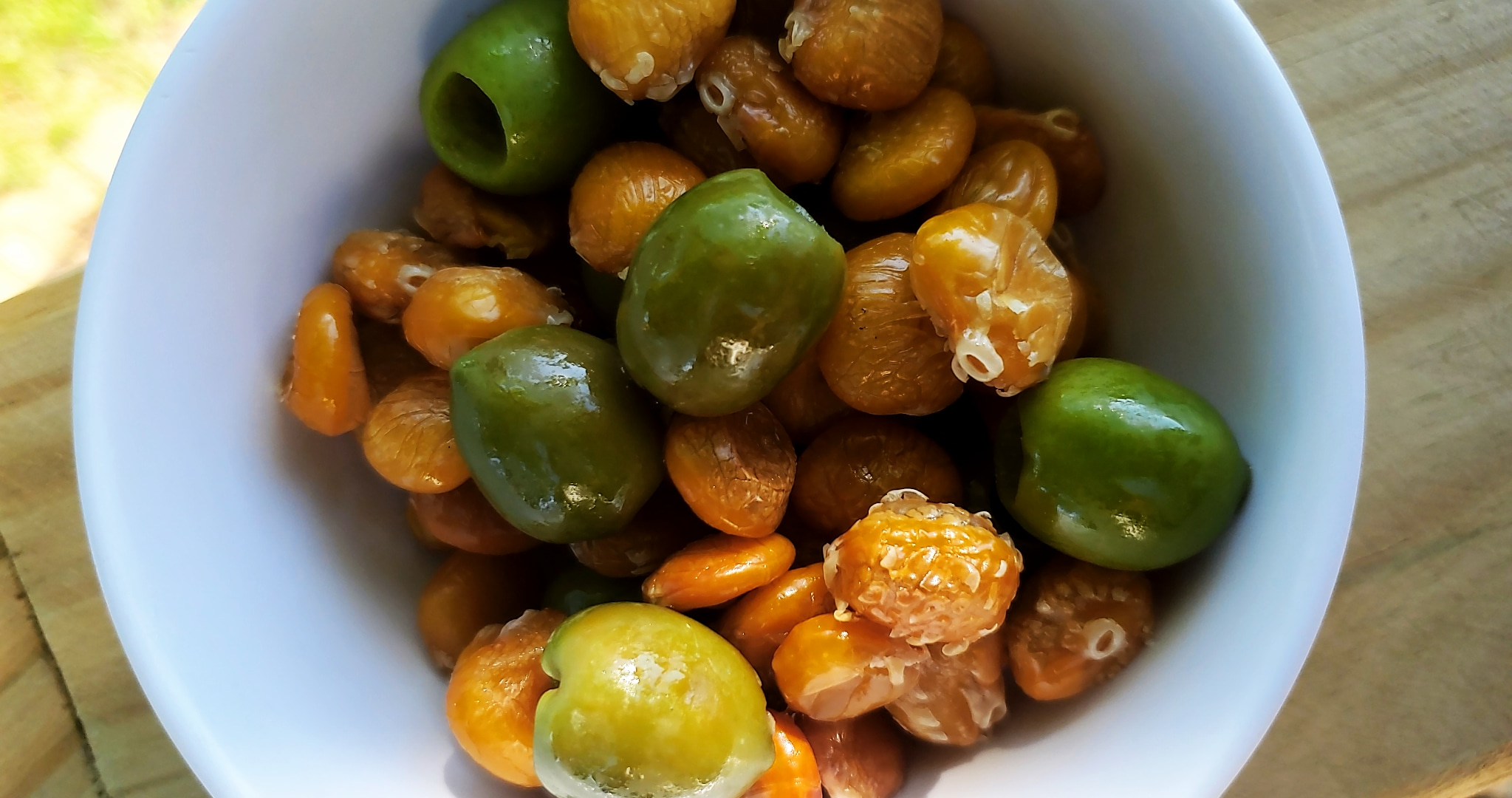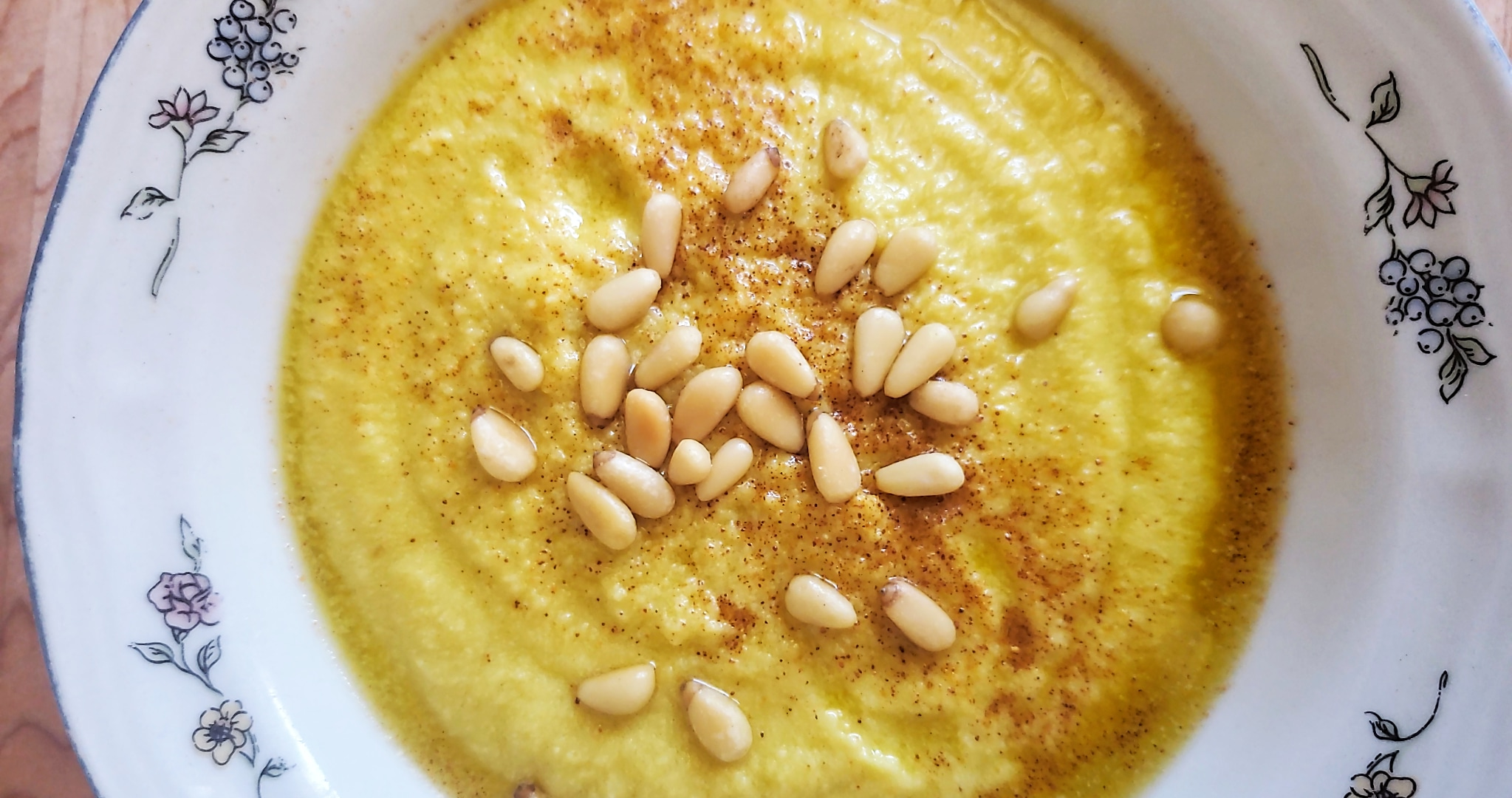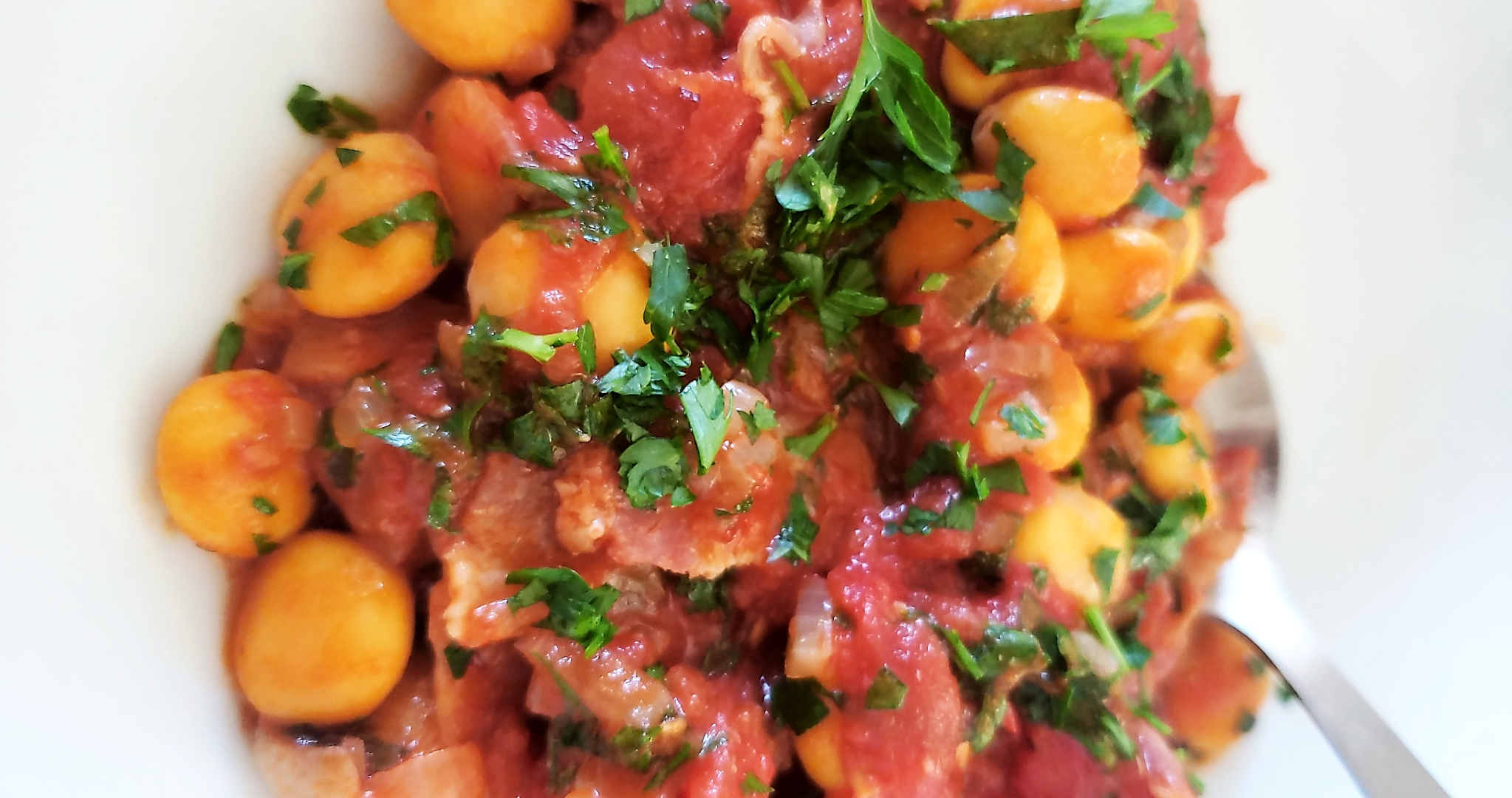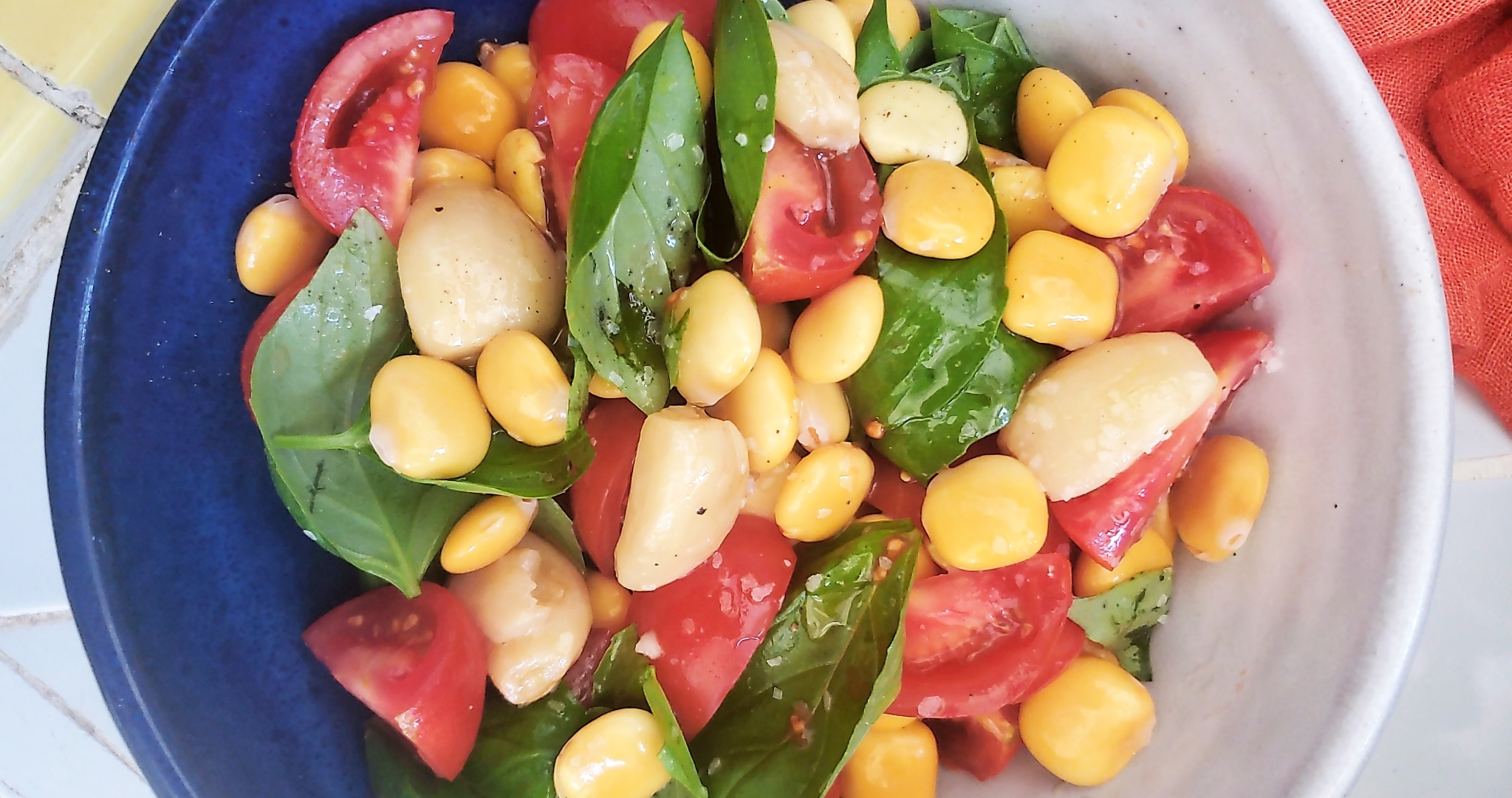It's Time To Show Some Love To The Lupini Bean
America's carb-shaming, protein-worshipping proclivities are relatively new. But since we've embraced keto and plant-based diets, bean sales have soared. America loves beans. Even if your relationship with food is mechanical and soulless, you want to be an influencer with abs? Eat beans, my gorgeously robotic friend.
Contemporary recipes are filled with trendy lentil suggestions and edamame applications. For better or worse, we've romanticized peasant food for Instagram likes. Taking high-def photos of famine-inspired meals and hashtagging it to capacity? That's the food blogger's checkmate. Still, beans never lost their importance in lower-class households. They continue to be a sturdy and cheap source of nutrition. Beans are hitting on all cylinders, succeeding in every economic class.
So why, then, do lupini beans continue to fly under the radar? They pack a protein punch. Every 100-gram serving contains between 12 and 16 grams of protein. That puts them neck-and-neck with soybeans, which are widely considered the top dog, protein-wise. They are undoubtedly ready to slide easily into any new diet, but you won't find them in most modern American kitchens.
Lupini beans don't hang out in plain sight. They hide in Italian specialty stores, Greek grocers, and Levant-leaning shops. Danny, I hear you say, it's probably because they taste bad. Well, hold up, because that's actually where I start to get dizzy with rage. Lupini beans are as delicious as they are versatile.
Jarred lupini beans come ready to eat, packed with flavor and full of unique texture. They're noticeably briny and pleasantly firm, meaty but a delight to chew. These plump, flat disks have a reliable tang and durability; they're delicious naked, without any culinary manipulation, but they await your inspired experimentation.
Perhaps the most honest, purest iteration of lupini beans I've found is in Portugal, where they're commonly served as a bar snack. The Portuguese understand that you don't need any outside intervention to enjoy lupini beans. Simply soak and brine them, then pop a few in your mouth in between sips of Super Bock. They're edible with the skin on, but a quick squeeze between your thumb and index finger will easily pop the bean from its shell. Sitting in a small bar in Porto, popping lupini beans and eating chorizo stuffed bread feels simple, spiritual, and also oddly reminiscent of the foods in my small, rust belt hometown.
My gut tells me lupini beans in the United States are mostly enjoyed by the older generation: Baby Boomers, mostly Italian and Greek first-generation working-class folks in the Midwest and in western Pennsylvania, where I grew up. Makes sense: Pittsburgh is a city that feels like an American dream that has since passed, and lupini beans somehow remain antiquated without ever becoming chic. Hell, the only reason I know about lupini beans is because my alcoholic great uncle screamed about them. Still, I've got a feeling that if a celebrity or influencer cut one passionate, camera-facing promo, the larger population would be all over lupini beans.
So what's the best way to eat them? The bean benefits from flavors surrounding the Mediterranean basin, where they were first grown. Parsley, olive oil, tahini, garlic, and lemon are a good place to start. All these recipes used jarred, ready-to-eat lupini beans. You can buy them raw and soak them if you wish, but the process can take weeks, and I'm not sure the juice is worth the squeeze unless your aim is to save some coin. Lupini beans have an extremely high alkaline content, which is why they taste slightly bitter, and in their raw state I am told that they're rather toxic. The good news? Companies are soaking and brining these beans so you don't have to. Take advantage. I ordered five jars from Cento directly, and the warehouse sent them all the way to Los Angeles in an old, worn-out olive oil box. I've been cooking with them all month.
Oven-Roasted Lupini Beans and Olives
Roast lupini beans with the shell and you will achieve great things. The skin will scorch and bubble, and you'll be left with a deep, roasted flavor and crunchy texture that complement the salty, briny olives. Roasted lupini beans on their own are quite delicious. I tossed mine with a tablespoon of olive oil and put them in a 400-degree oven for about 35 minutes and turned them a few times. They taste a little bit like pot-popped popcorn.
Grilled Lupini Beans With Lemon
Grill anything with lemon and it's good. I threaded lupini beans and lemons on skewers, and the result was wonderful. Charred skin and bright acid are a can't-miss summer grilling combination. Next time, I'll be sure to layer pieces of onion and pepper in between each bean. Make sure to leave the skin on, otherwise the bean is too frail to stab with the skewer.
Lupini Bean Hummus
Lupini bean hummus packs an incredible flavor. Simply rinse a jar of lupini beans and pop the skin off each bean. Mix with your desired combination of tahini, garlic, lemon, and olive oil, then blend. The texture is a bit grainy for hummus, but the lupini imparts excellent flavor. I prefer this kind of hummus with a flatbread, something like lavash if you can find it.
Lupini Beans in a Jar With Garlic and Olive Oil
My Uncle Mike was a charismatic Greek-American who would flip lit cigarettes into his mouth and drunkenly say things like, "Ya gotta think young, baby." I don't know where on earth he got the idea to do this, but he would take a jar of lupini beans, drain and rinse them, then layer them back in the jar with shaved garlic and olive oil. He'd refrigerate it for a week, and then eat the beans as a snack with a piece of bread. He reeked of garlic.
Stewed Lupini Beans with Tomatoes
I wondered what lupini beans would be like stewed hot, so I essentially made a tomato sauce akin to shakshuka. I tossed a can of tomatoes into a pot with garlic, onion, bell pepper, serrano pepper, cumin, paprika, and parsley and simmered it until the tomatoes broke down, then turned the heat to low and added the lupini beans for 5-10 minutes. The result is something warm and hearty; if you add crusty bread, it becomes a solid dinner option. I'm inclined to think that lupini beans will do well in any tomato sauce. This might even succeed with the aforementioned roasted lupini beans. Roast, and then rehydrate in tomato sauce—something I'm bound to try going forward.
Lupini Bean Summer Salad
This is the most conventional application for lupini beans, and I think it's the one that's most applicable for the average home cook. This salad works well in the summer as part of a picnic spread or as an excellent side to a cookout or barbecue. Sweet tomatoes, aromatic basil, and roasted garlic complement the salty nature of lupini beans.
- 1 (8-oz.) jar Cento lupini beans
- 4-5 small, on-the-vine tomatoes (or heirloom or any other tomatoes that are in season; you just want something sweet)
- 10-12 whole basil leaves
- 1 Tbsp. red wine vinegar
- Garlic confit to taste
- Salt and pepper to taste
Simply strain and rinse the jar of lupini beans. Quarter the tomatoes and toss in vinegar, salt, and pepper. Add the lupini beans, tomatoes, and basil leaves to a bowl. Now add a few spoonfuls of garlic confit with its infused oil. Crack some more black pepper and mix thoroughly. I find that lupini beans don't need additional salt, as they are rather briny even when rinsed.



